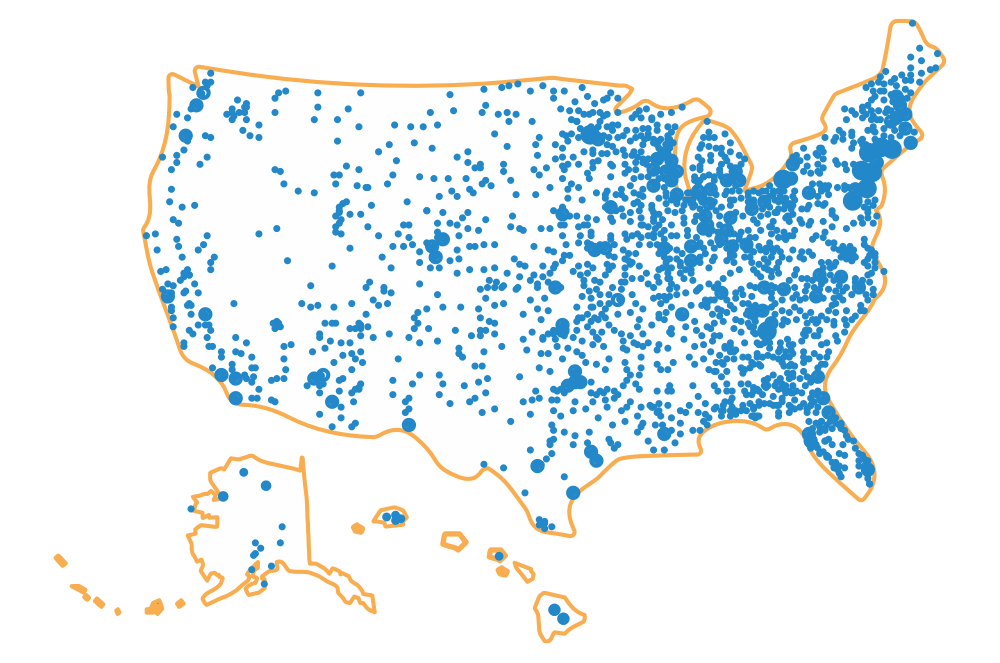Did you know that 529s can also be used to pay qualified costs for career training at trade, technical, and vocational schools, certificate programs, apprenticeships, two-year community colleges as well as four-year colleges and universities? At the end of CTE Month, here’s what you need to know about using Ohio 529 CollegeAdvantage for your children’s or grandchildren’s education after high school.
529 plans aren’t just for four-year programs
You can use your Ohio 529 account almost anywhere you are comfortable sending your child and your money. 529 plans can be used at any education institution nationwide that accepts federal financial aid. That’s more than 30,000 higher education institutes. If you want to confirm that the schools your child is interested in attending — whether four-year, two-year, graduate, trade or vocational — accepts federal aid, then do a search to see if the institutions have a Federal School Code on the Free Application for Federal Student Aid (FAFSA). If the schools do, then you can use your 529 funds there.
Apprenticeships
If you child wants to start an apprenticeship, the program must be registered with the U.S. Secretary of Labor’s National Apprenticeships Act in order to use your 529 savings there. The State of Ohio also wants to help interested students find the perfect apprenticeship opportunity available in Ohio. If your child is also interested in earning an associate degree, there are apprenticeship programs in Ohio where participants earn credits towards an associate of technical studies degree through Apprenticeship Pathways. The Ohio Department of Higher Education (ODHE) links apprenticeship programs with local two-year community colleges so participants can also earn a technical associate’s degree. Some trades cooperating in this program include sheet metal, carpentry as well as plumbers and pipefitters. Recent apprenticeship expansion grants have also dramatically increased the number of available apprenticeship programs on community college campuses around Ohio. These new programs are also built into a technical associate degree.
Community colleges
Community colleges are an excellent place to start an education after high school. Usually lower in cost than a four-year program, your child can take required core classes that can transfer to other schools. Or they can explore different courses at a lower price point while determining what career best suits them. Your student can earn an associate degree or use the community college as a steppingstone to a four-year university.
Cities and schools also offer financial aid through scholarships to help pay for students’ attendance at higher education institutions. For instance, the Say Yes Cleveland Scholarships help Cleveland Metropolitan School District graduates can pay for college tuition to attend college, university, or accredited training program. With The Columbus Promise, Columbus City School (CCS) District graduates can take six semesters of classes for free at Columbus State Community College. The CCS students will also receive a $500 scholarship per semester. For students in the greater Cincinnati area, look to the Cincinnati Scholarship Foundation to find available area scholarships in that part of the state.
In any case, an Ohio 529 plan can cover qualified high education expenses while your child studies at the community college.
Trade and vocational schools
If your child attends a federally accredited vocational or trade school after high school graduation, then these schools can provide an education focused on specialized skills. Because of these schools’ close connections to professional trades, your child may graduate with a full-time, well-paying job already lined up. The schools’ areas of expertise can range from broadcasting, cosmetology, culinary arts, diagnostic imaging, graphic design, information technology, massage therapy, mortuary science, nursing, restaurant management, truck driving, to welding, for example. Your Ohio 529 account can be used for this.
In Ohio, there is a robust network of trade schools, known as Ohio Technical Centers (OTCs), which provide “post-secondary career and technical education (CTE) through 49 career centers across Ohio. These institutions offer programming in the skill trades (i.e., HVAC, phlebotomy, police training, EMT, etc.) that prepare learners for certificates, industry-recognized certifications, and state licensures. Many of the OTCs are positioned to respond quickly to the needs of business and industry by providing customize trainings and business consultation services to companies and organization to assist with meeting Ohio’s workforce goals.”
Ohio 529 tax benefits
There are great tax benefits of saving for your child’s or grandchild’s education after high school with Ohio 529 CollegeAdvantage. The first is that all earnings grow tax-free, meaning that all the investment growth is yours to use for your children’s future educational expenses. Compound interest — the interest earned on contributions, earnings, and interest already accumulated in the 529 account — is included in the tax-free earnings. To see just how tax-free growth adds up with a 529 savings plan, use the Tax Benefit Calculator to see the difference between a 529 plan account and a taxable savings account.
The second 529 tax benefit is that all withdrawals are tax free when used for qualified higher education expenses at an accredited program. These costs include most of the major expenditures for attending an accredited institution like: tuition; room and board; off-campus residency and groceries (non-taxable items) provided these costs are equal or less than the same room and board allowances from the accredited education institution; mandatory fees; computer equipment and related technology as well as internet services; books, supplies and equipment related to enrollment and class schedule; certain expenses for a special-needs student; and qualified apprenticeships costs such as fees, textbooks, supplies, and equipment like required trade tools at for apprenticeships registered with the U.S. Labor Department.
The third tax benefit is that any Ohio resident — whether the account owner or a gift giver — who contributes to Ohio 529 Plan, can deduct their contributions from their taxable state income. The deduction is $4,000 per year, per beneficiary, with unlimited carry forward, which means that $4,000 is not an annual contribution limit. If an Ohio taxpayer contributes more than $4,000 in one year, they can continue to subtract $4,000 per year, per beneficiary, from their State of Ohio taxable income until all Ohio 529 Plan contributions have been deducted.
While there are many educational paths forward for your kids, one thing is certain: Ohio's tax-free 529 Plan is the simple way to prepare. Your savings grow tax-free and stay tax-free when used for qualified higher education expenses. And Ohio 529 can be used at thousands of schools, nationwide.
Since 1989, Ohio 529 CollegeAdvantage has been helping families across the nation save for their children’s higher education. Ohio’s 529 Plan covers qualified expenses at any four-year college or university, two-year community college, trade or vocational school, apprenticeship approved by the U.S. Labor Department, or certificate programs, or continuing education classes nationwide that accepts federal financial aid. Learn, plan, and start for as little as $25 today at CollegeAdvantage.com.
This article was originally posted in May 2019 and has been updated to reflect new information for 2025.








